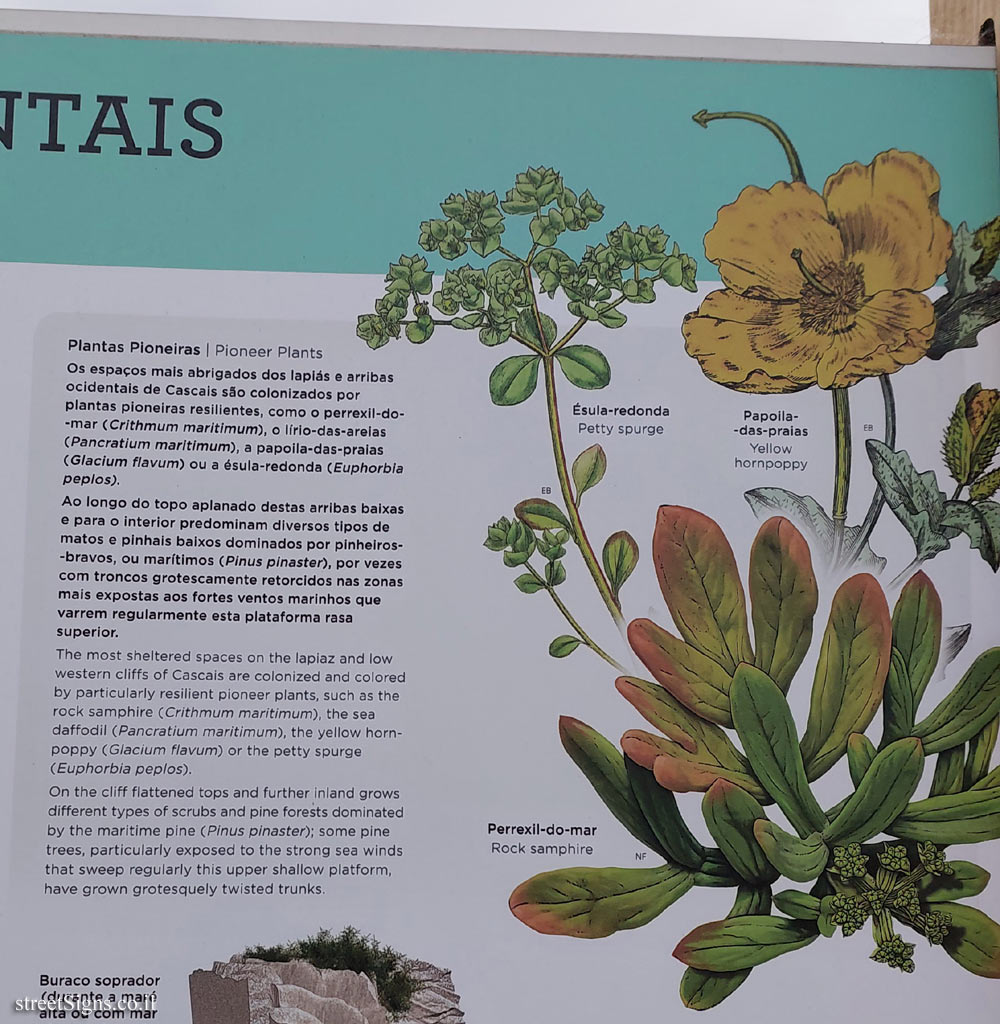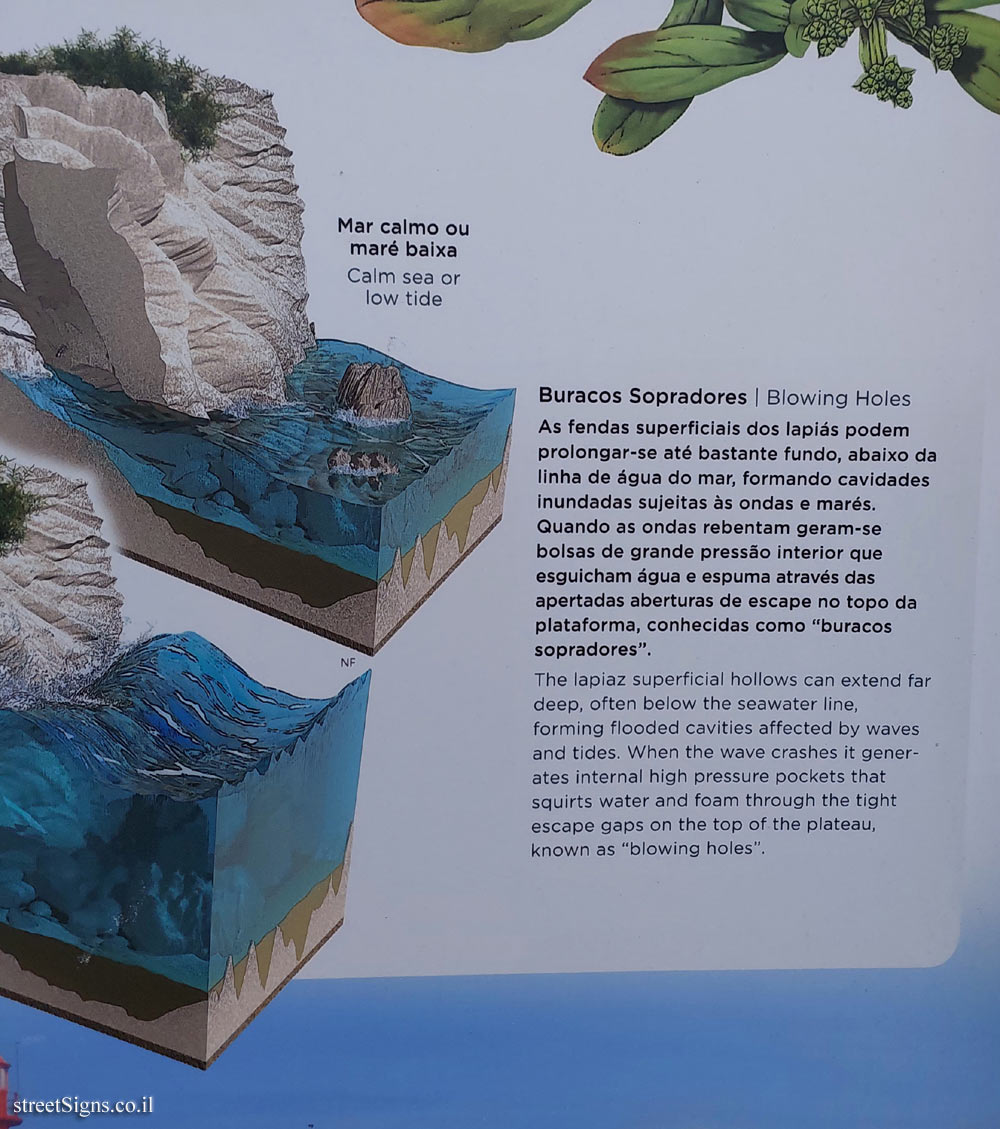FORTES das ARRIBAS OCIDENTAIS
Forts of Western Cliffs A costa sudoeste do concelho de Cascais assenta numa plataforma calcária aplanada e baixa (e daí o nome do Cabo Raso). Esta plataforma rochosa raramente sobe além dos 15-20m de altura, formando arribas baixas, com diversas pequenas praias e zonas passiveis de desembarque. Ao longo dos séculos esta costa fol, por isso, dotada de várias fortificações marítimas para proteger a região e o acesso direto ao rio Tejo e a Lisboa, por parte de frotas invasoras ou de piratas.
Para oeste de Cascais destacam-se: a Fortaleza de Nossa Senhora da Luz (ou Cidadela de Cascais); o Forte (e farol) de Santa Marta; o Forte de Nossa Senhora da Guia; o Forte de São Jorge de Oitavos; o Forte de São Brás de Sanxete (atual farol do Cabo Raso); a Bateria da Cresmina; a Bateria da Ponta Alta (onde está o hotel "Fortaleza do Guincho"); a Bateria da Galé (atual estalagem Muchaxo); e o forte do Guincho (junto à praia do Abano).
Esta linha de fortificações foi construída a partir do século XVII e manteve-se funcional e com peças de artilharia até ao século XIX, cruzando linhas de fogo entre si. Foi depois convertida para outros usos (como faróis e estalagens), ou abandonada.
The southwest coast of Cascais municipality rests on a flat and low limestone platform (hence the name of "Cabo Raso", or "shallow cape" in English). This rocky platform rarely rises above 15-20m in height, forming low cliffs breached by several small beaches prone to naval landing. For this reason, this coast has been endowed over the centuries with several maritime fortifications to protect the region and the direct access to Tejo river and the Portuguese capital Lisbon, by enemy fleets or pirates.
West of Cascais stand out: the Nossa Senhora da Luz Fortress (or Cascais Citadel); the Santa Marta Fort (and respective lighthouse), the Nossa Senhora da Guia Fort: the São Jorge de Oitavos Fort, the São Brás de Sanxete Fort (over which the Cabo Raso lighthouse was built); the Cresmina Battery, the Ponta Alta Battery (now the hotel "Fortaleza do Guincho"); the Galé Battery (occupied by the Muchaxo inn); and the Guincho Fort (next to Abano beach).
This line of fortifications was built from the 17th century onwards and remained functional and with artillery pieces until the 19th century, crossing lines of fire between each other. They were later converted to other uses (such as lighthouses and inns), or abandoned into ruins.
[Images]
1-Cidadela de Cascals | Cascais Citadel.
2-Forte de São Jorge de Oltavos | São Jorge de Oltavos fort.
3- Bateria de canhões na muralha sul do forte de São Jorge de Oitavos.
Cannon battery on the south wall of São Jorge de Oitavos fort.
4-Farol do Cabo Raso e forte de São Brás de Sanxete, sobre os lapiás calcários da plataforma do Raso.
Cabo Raso lighthouse and São Brás de Sanxete fort, over the limestone laplaz of the Raso platform.
5- Hotel Fortaleza do Guincho, construído sobre a muralha da Bateria da Ponta Alta.
"Fortaleza do Guincho" hotel, built over the walls of the Ponta Alta Battery.
[Extended text on the third image, Forte dos Oitavos, the fortress where the sign is located]
3.
Forte de São Jorge de Oitavos
São Jorge de Oitavos Fort A construção deste forte decorreu oficialmente entre 1642 e 1648, ficando dotado com cinco peças de artilharia. Por trás desta bateria e no centro do recinto construíram-se várias dependências para alojamento e quartel da guarnição de 22 militares, incluindo o armazém, a casa da pólvora e a cozinha.
Este forte tinha uma clara importância estratégica quando comparado com outras fortificações costeiras vizinhas, tendo originalmente uma cisterna, uma ponte levadica e um fosso. As suas capacidades de defesa foram prolonga- das para oeste por uma parede de mosqueteria espessa e longa, dividida em seis secções contíguas.
Atualmente serve como centro de interpretação dahistória militar portuguesa.
The construction of this fort officially took place between 1642 and 1648, being equipped with five pieces of artillery. Behind this battery and in the center of the enclosure, several rooms were built as accommodations and barracks for its 22 soldiers garrison, also including the warehouse, the gunpowder house and the kitchen.
This large fort had a clear strategic importance compared to other neighboring coastal fortifications, originally having a cistern, a drawbridge and a moat. Its defense capabilities were extended to the west by a thick and long wall to shelter musketeers, divided into six contiguous sections.
It currently serves as an interpretation center for Portuguese military history.
Plantas Pioneiras | Pioneer Plants Os espaços mais abrigados dos laplás e arribas ocidentais de Cascals são colonizados por plantas pioneiras resilientes, como o perrexil-do-mar (Crithmum maritimum), o ilrlo-das-arelas (Pancratium maritimum), a papoila-das-praias (Glacium flavum) ou a ésula-redonda (Euphorbia peplos).
Ao longo do topo aplanado destas arribas baixas e para o interior predominam diversos tipos de matos e pinhais baixos dominados por pinheiros-bravos, ou marítimos (Pinus pinaster), por vezes com troncos grotescamente retorcidos nas zonas mais expostas aos fortes ventos marinhos que varrem regularmente esta plataforma rasa superior.
The most sheltered spaces on the lapiaz and low western cliffs of Cascais are colonized and colored by particularly resilient pioneer plants, such as the rock samphire (Crithmum maritimum), the sea daffodil (Pancratium maritimum), the yellow horn- poppy (Glacium flavum) or the petty spurge (Euphorbia peplos).
On the cliff flattened tops and further inland grows different types of scrubs and pine forests dominated by the maritime pine (Pinus pinaster); some pine trees, particularly exposed to the strong sea winds that sweep regularly this upper shallow platform, have grown grotesquely twisted trunks.
Buracos Sopradores | Blowing Holes As fendas superficiais dos lapiás podem prolongar-se até bastante fundo, abaixo da linha de água do mar, formando cavidades inundadas sujeitas às ondas e marés. Quando as ondas rebentam geram-se bolsas de grande pressão interior que esguicham água e espuma através das apertadas aberturas de escape no topo da plataforma, conhecidas como "buracos sopradores".
The lapiaz superficial hollows can extend far deep, often below the seawater line, forming flooded cavities affected by waves and tides. When the wave crashes it generates internal high pressure pockets that squirts water and foam through the tight escape gaps on the top of the plateau, known as "blowing holes".
EU flag
CASCAIS
The Charm of the Atlantic Coast
cascais.pt

 Click for a larger image
Click for a larger image  Click for a larger image
Click for a larger image  Click for a larger image
Click for a larger image  Click for a larger image
Click for a larger image  Click for a larger image
Click for a larger image